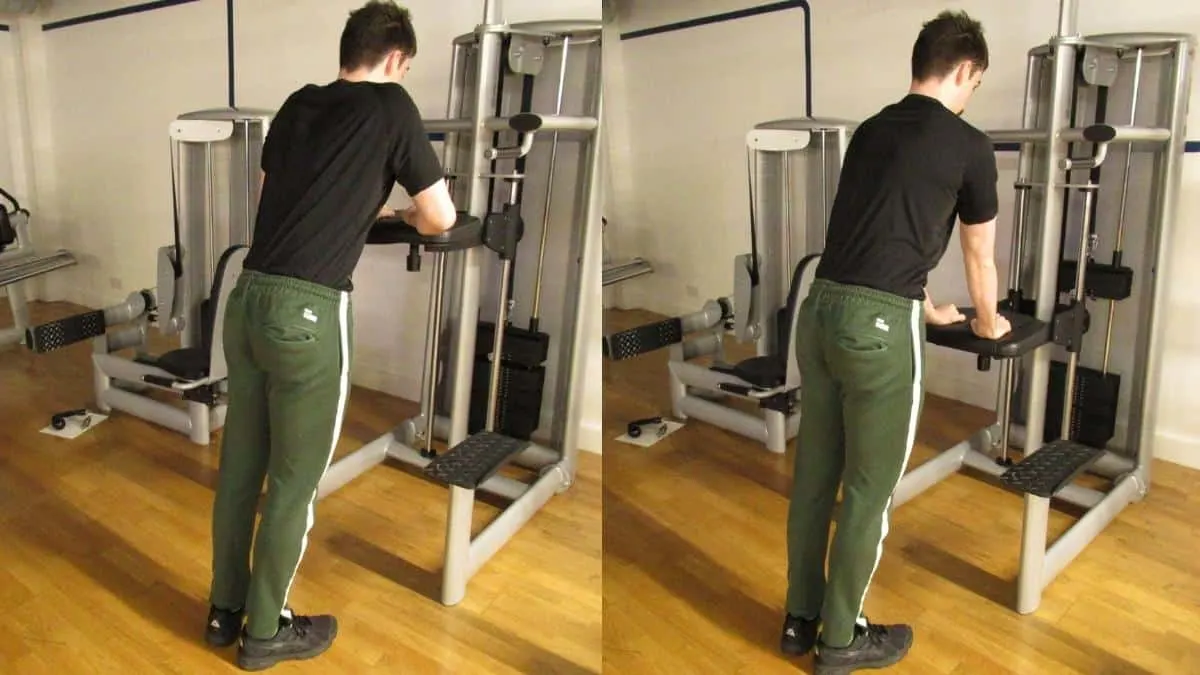As explained in our triceps guide, the primary function of the triceps is elbow extension, which is to say, the act of straightening and locking out the arms.
This extension motion is precisely the movement that occurs during a tricep pull down.
But sometimes, doing regular pushdowns on a cable machine becomes boring.
Performing novel pushdown exercises, on the other hand, can make your training more exciting and stimulate new triceps growth.
With that in mind, this series of tutorials shows you 6 ways to perform a tricep pushdown on an assisted pull-up machine.
You may also enjoy our guide on how to do a tricep pushdown without a machine (a cable machine, that is).
Assisted tricep pushdown exercise details
- Main Muscles: Triceps
- Exercise Type: Strength
- Exercise Mechanics: Isolation
- Difficulty Level: Beginner
- Equipment Needed: Assisted pull-up machine
How to do a tricep pushdown on an assisted pull-up machine
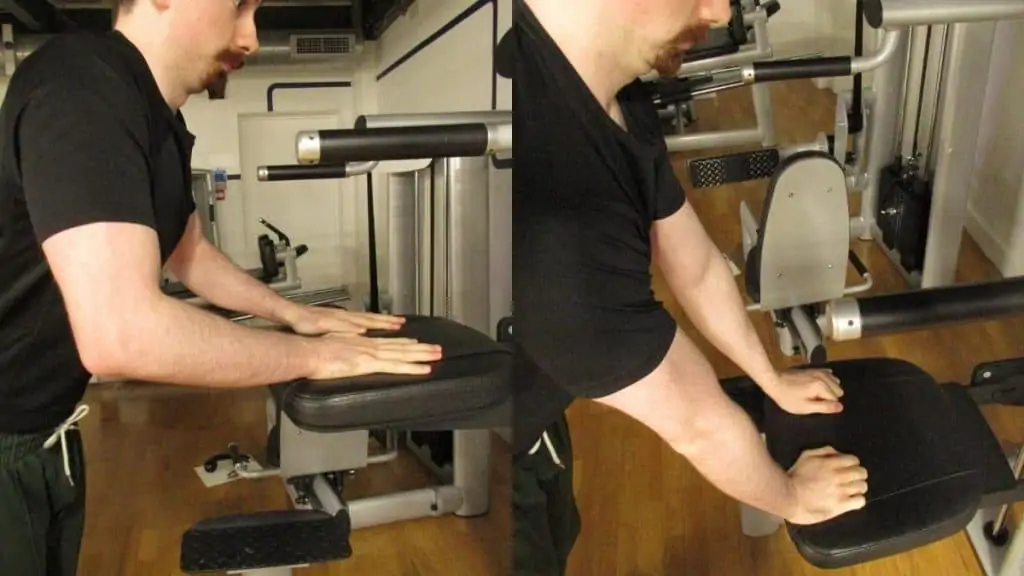
- Stand so that you’re facing the front of an assisted pull-up station.
- Place your hands close together on the middle of the pad.
- Tuck your elbows into your sides and bend over slightly.
- Forcefully push your hands into the pad and flex your triceps.
- Keep pushing until your elbows are locked out.
- Hold the contraction for a moment, and then raise the pad back up by bending your elbows.
- Repeat for 3-5 sets of 10-20 reps.
Assisted tricep pushdown variations
Here are 5 more assisted tricep pressdown variations that you can do on the assisted pull-up station.
Holding the sides of the pad

If you’re really strong, then the regular version of the assisted pushdown can be quite wrist-intensive because your wrists are in a highly extended position as you push into the pad.
One solution is to simply hold the sides of the pad and then push down.
While the assisted tricep pressdown isn’t strictly an isolation exercise by default (it works your chest a bit, too), holding the sides of the pad will skyrocket your chest activation and, in turn, transform the exercise into a true compound press.
Is this transformation a good thing?
It depends on your goals.
If you want to isolate your triceps as much as possible, then check out some of the other variations below. If, however, you want to get some extra chest work in while training your triceps, then holding the sides of the pad is the best way to perform assisted tricep pushdowns.
With a medicine ball
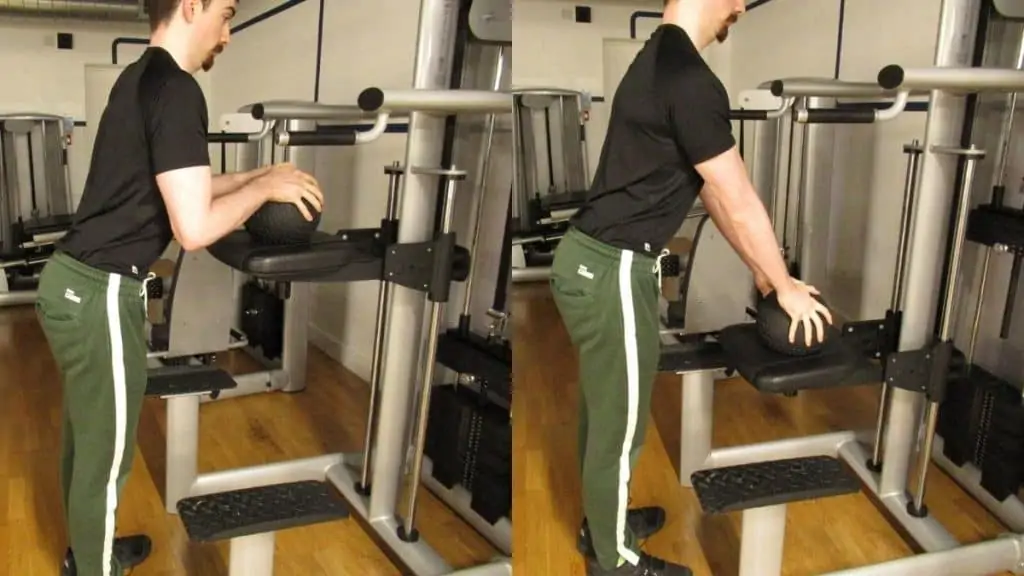
As mentioned, pressing into the pad with highly extended wrists isn’t the most comfortable experience if you’re lifting heavy weights.
This is where the medicine ball comes in.
By placing a med ball on the pad and then pushing into the ball, you’ll naturally place your wrists in a more comfortable position.
Additionally, gripping a medicine ball necessitates using a narrow hand position, which, as you probably know, increases your triceps activation and reduces the amount of force that your chest can produce.
In other words, doing a tricep pressdown on an assisted pull-up machine with the aid of a medicine ball is an effective way to more or less isolate your triceps while sparing your wrists in the process.
With your fists
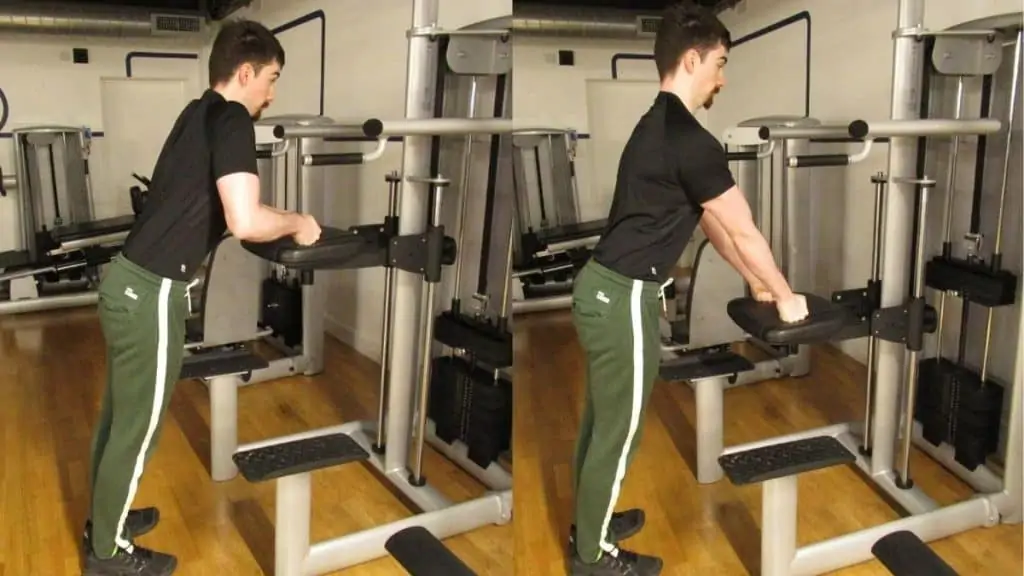
Pushing into the pad with your knuckles takes the strain off your joints because it allows you to keep your wrists straight.
And, because you’re most likely pushing into soft padding, your knuckles won’t take much—if any—of a beating.
You may also find that you’re able to generate more pressing power when you push into the pad with your knuckles (i.e., with straight wrists) than when you push into it with a bent wrist.
There is, after all, a reason why strong bench presses don’t lift with bent wrists—it leaks force and makes you weaker.
One arm at a time
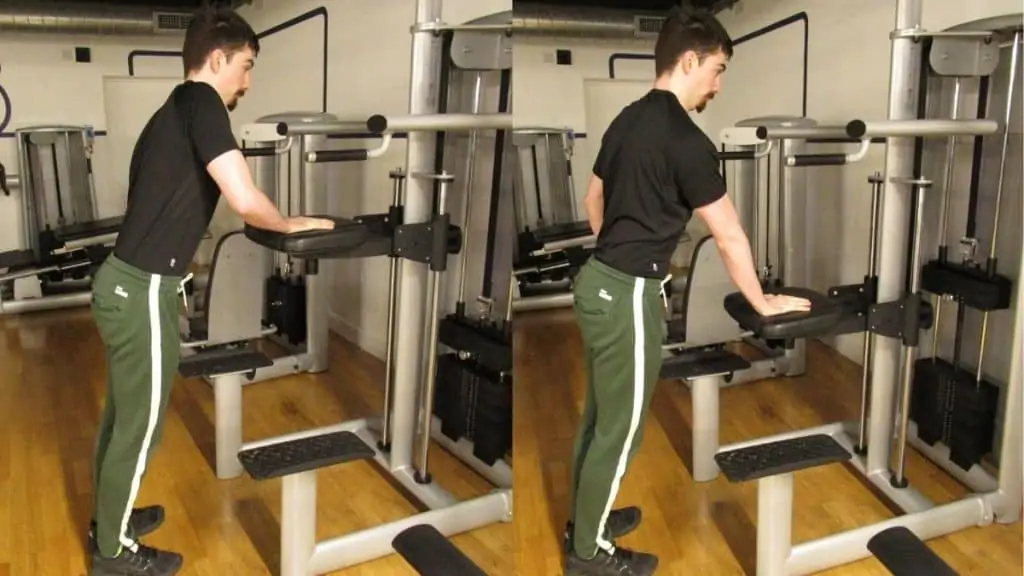
If you’re up for a challenge—or if you can already lift all the weight on the stack with two arms—then you can also perform the one-arm assisted triceps pushdown.
The technique is virtually the same. You bend over slightly and then push into the pad until your elbows reach complete extension.
The difference is that the one-arm version requires a) greater core stability and b) more time.
You can reduce the core stability requirement somewhat by holding onto the machine as you press, which will likely enable you to lift more weight.
As for the time component, there’s no way around that, I’m afraid. Any unilateral exercise is going to demand more gym time simply because you’re training each arm separately.
Kneeling

The kneeling tricep pressdown, performed on a cable machine, is a popular exercise for isolating the triceps.
But many lifters don’t realize that they can get great gains by performing the same exercise on an assisted pull-up machine.
Admittedly, performing a kneeling pushdown on an assisted pull-up station requires a lot of core strength—you need to push the pad all the way down and then get into a kneeling position.
Yet, even though your abs will be getting an intense isometric workout, your chest will actually be less active when you do the exercise kneeling down.
This is because, when you’re kneeling, you don’t need to bend over as much (because the weights are already elevated off the stack), which means that you won’t work your chest at the expense of your triceps.
Conclusion: Should you do tricep pushdowns on the assisted pull-up machine or not?
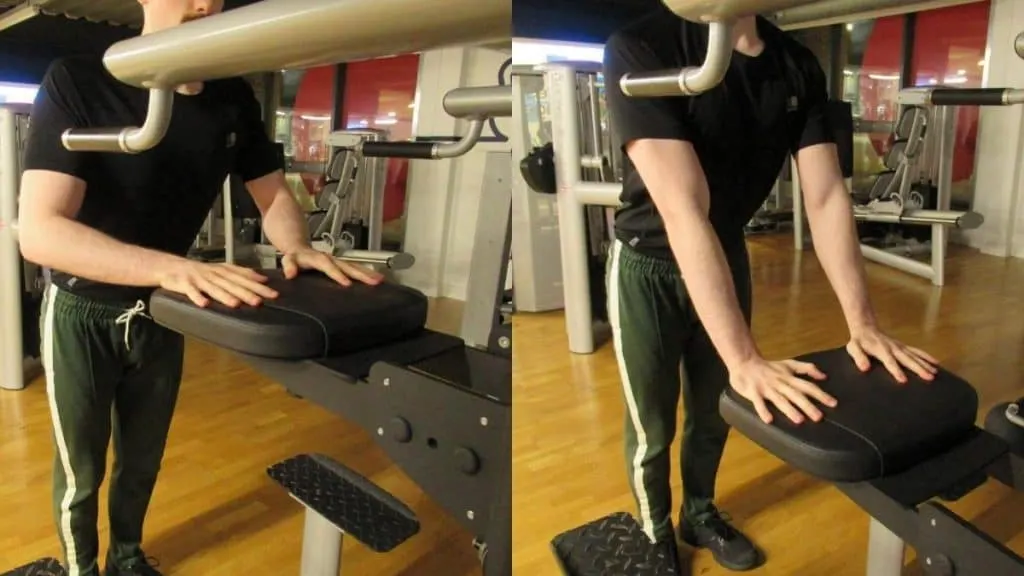
The assisted pull-up machine has many uses—dips, leg raises, glute kickbacks, the list goes on.
Many people, however, don’t realize that the assisted pull-up machine is actually a fantastic piece of gym equipment for tricep pushdowns.
Unlike regular pressdowns, there’s no need to hunt down attachments when you use an assisted pull-up machine for pushdowns.
Moreover, as you saw above, there’s a surprising amount of variations within what is already a highly specific and uncommon exercise. So you’re likely to find a version of the assisted tricep pushdown that’s comfortable and which gives you great triceps activation.

